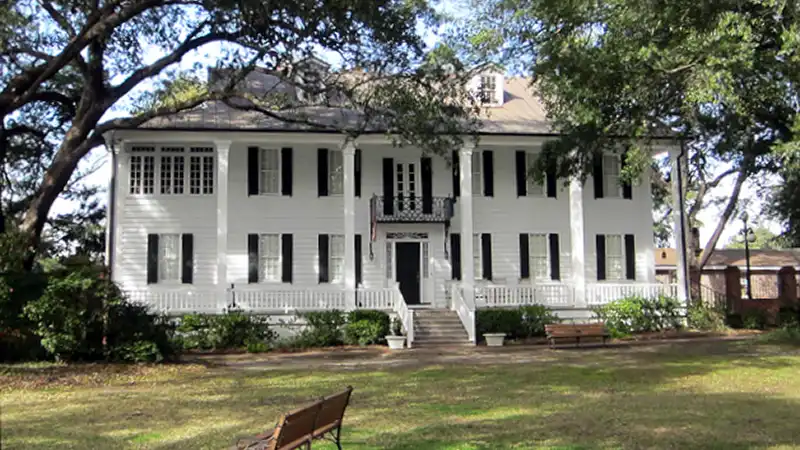
What a treat that in neighboring Georgetown, we have access to five wonderful museums that honor our Lowcountry’s soulful history dating back to pre-colonial times.
Gullah Museum
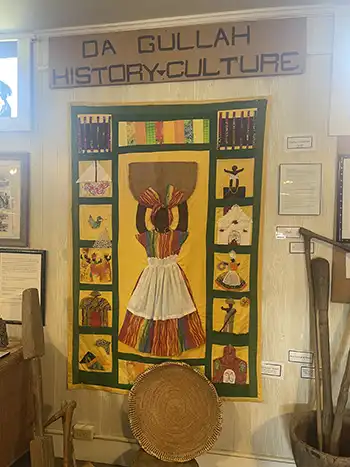 Start at the Gullah Museum, located at 123 King St. Founded in 1997 by the late Bunny and Andrew Rodrigues, and now run by the four Rodrigues sisters Janette, Beatrice, Anna and Julia, the museum is a shrine to the Gullah Geechee culture, rich with traditions such as folk medicine like wild black cherry bark, wormwood, mint, elderberry, cowrie shells, Chinaberry, button snakeroot, Spanish moss, spider webs and mullein leaves that the enslaved used to treat illnesses on the plantations.
Start at the Gullah Museum, located at 123 King St. Founded in 1997 by the late Bunny and Andrew Rodrigues, and now run by the four Rodrigues sisters Janette, Beatrice, Anna and Julia, the museum is a shrine to the Gullah Geechee culture, rich with traditions such as folk medicine like wild black cherry bark, wormwood, mint, elderberry, cowrie shells, Chinaberry, button snakeroot, Spanish moss, spider webs and mullein leaves that the enslaved used to treat illnesses on the plantations.
Also on display are hand-woven sweetgrass baskets; art by Jonathan Green; and ingredients such as rice, okra, peanuts and black beans, used in recipes that have been passed down for generations and are still enjoyed in Gullah cuisine today. Further, artful quilts made by Bunny portray ancestral stories of African and plantation culture. Additionally, explore the collection of jewelry made by cotton artist, activist and international entrepreneur Deaon Griffin-Pressley, who goes by the artistic moniker Slavery.
Kaminski House Museum
Next, cross over to 1003 Front St. and take a tour of the Kaminski House Museum. The 18th century Georgian manor house is situated on a bluff with a sprawling lawn and sweeping views of the Sampit River, where the mansion’s architecture, antiques and art recall gilded eras of Georgetown’s great wealth. Tour times are 11 a.m., 1 p.m. and 3 p.m. on Mondays through Saturdays.
Georgetown County Museum
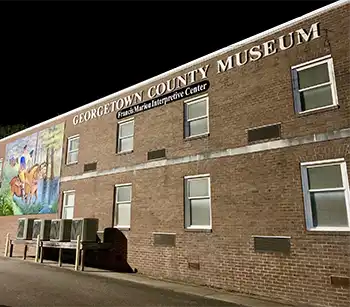 Just a few blocks down at 120 Broad St. is the Georgetown County Museum, displaying artifacts and archives that explain how the indigo, rice and slave trades elevated Georgetown County to become one of the wealthiest in the colonies; how the British occupation claimed both life and land; how during the Civil War Georgetown County held the largest slave population in the country; how a second northern invasion saved the area from devastation after reconstruction; and how the opening of the iconic International Papermill was born out of the Depression.
Just a few blocks down at 120 Broad St. is the Georgetown County Museum, displaying artifacts and archives that explain how the indigo, rice and slave trades elevated Georgetown County to become one of the wealthiest in the colonies; how the British occupation claimed both life and land; how during the Civil War Georgetown County held the largest slave population in the country; how a second northern invasion saved the area from devastation after reconstruction; and how the opening of the iconic International Papermill was born out of the Depression.
South Carolina Maritime Museum
Then take a self-guided tour of the South Carolina Maritime Museum, located at 729 Front St., and learn about the heroism, tragedies and celebrations that happened on board the vessels that traveled through the port city of Georgetown over the centuries. On display are replicas of clipper ships and steamers that sailed into her harbor from 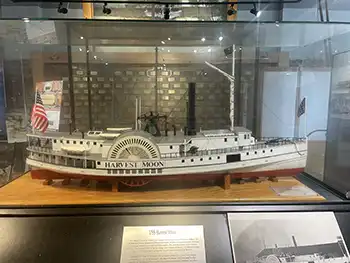 all over the world, along with old sepia photographs and newspaper clippings that tell the stories of shipwrecks that happened in Georgetown’s multiple waterways, which once served as the roads. The cornerstone of the museum is the 100+ year-old Fresnel lens, which the Coast Guard took down from the Georgetown lighthouse in the 1980s when automation no longer required the antiquated beacon.
all over the world, along with old sepia photographs and newspaper clippings that tell the stories of shipwrecks that happened in Georgetown’s multiple waterways, which once served as the roads. The cornerstone of the museum is the 100+ year-old Fresnel lens, which the Coast Guard took down from the Georgetown lighthouse in the 1980s when automation no longer required the antiquated beacon.
Rice Museum
Located at 633 Front St., the Rice Museum sits next door to the iconic clock tower, which was its original location, and before that housed the mayor’s office, city hall and the local jail, which were all in operation through the mid-1960s, according to Chairman of the Board Vida Miller. The Town Clock, built in 1857, became the first building in 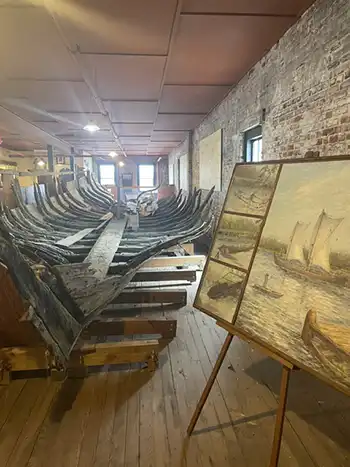 Georgetown to be added to the National Register of Historic Places. Now called The Studio, the downstairs area is available to the public for booking events such as bridal or baby showers, art classes and more. Touring the upstairs of the old brick structure is still very much a part of the Rice Museum experience today because of its plantation scenes displaying miniature handmade caricatures that portray the grueling process of how the crop was planted, grown and harvested.
Georgetown to be added to the National Register of Historic Places. Now called The Studio, the downstairs area is available to the public for booking events such as bridal or baby showers, art classes and more. Touring the upstairs of the old brick structure is still very much a part of the Rice Museum experience today because of its plantation scenes displaying miniature handmade caricatures that portray the grueling process of how the crop was planted, grown and harvested.
On the first floor of the Rice Museum, purchase tickets in the gift shop, which is loaded with treasures like paintings by local artists, sweetgrass baskets, jewelry and an extensive selection of books written by regional authors. Visit the second floor, once home to the Kaminski Hardware Store, which opened in 1854. Filled with artifacts, ledgers and the cash register that were all left behind, the old shop, alongside a gallery of rice culture, is seemingly frozen in time. The third floor has been transformed into a mausoleum for the remains of the sunken Brown’s Ferry vessel, the oldest recovered wooden ship in America, discovered in the Black River in the 1970s by archeological divers.
While each of Georgetown’s museums operate independently of each other, they often work together to ensure the stories of our stimulating past will stay alive for present and future generations.
By Sarah Rose

Leave a Reply